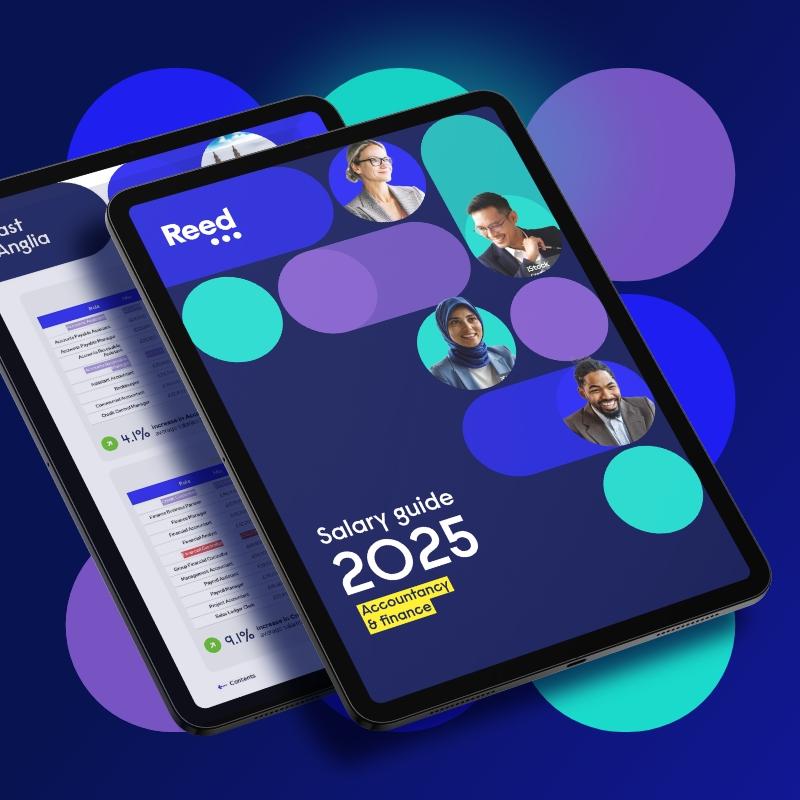The recruitment process can be incredibly time consuming. The good news is that nearly every recruitment drive can be broken down into seven simple steps, many of which you will be familiar with already.
It is easy to assume that when someone hands in their notice, you need to replace them like-for-like, as quickly as possible, but this might not always be the best solution.
Here's a one-stop guide that you can use time and again that outlines the seven recruitment process steps that you should take when hiring –perfect for staying in line with legislation, running a foolproof recruitment process, and hiring the right candidates to last and reduce costs down the line.
Generate interview questions in minutes with our interview question generator.
1. Know what you need
The key to getting what you want? Knowing what you are looking for. That's where good planning comes in. Ensuring you have an in-depth understanding of the role you are hiring for will make the rest of the recruitment process easier and faster, since you’ll quickly be able to determine who has the experience required to successfully fulfil the role. It also ensures candidates have a clear purpose and planned goals for the position when they join, removing any ambiguity on where they fit within wider business objectives.
Key questions to answer:
Why is a new employee needed?
What duties and responsibilities will the successful candidate have?
What skills or abilities are required to succeed in the role?
Where does this role fit within the wider business structure?
2. Prepare the job description and person specification
Job descriptions and person specifications are written descriptions of the role you are recruiting for and the type of candidate you need to fill it.
They will be one of the first things jobseekers read when they find your job vacancy. Attracting the right applicants during the recruitment process is largely about getting these two documents right, so it's worth spending time on them before moving to the next steps.
Try to include key responsibilities in the job description to give a good idea for what the role involves, as well as giving a feel for who they’d be working with and what success looks like.
Person specifications help you characterise the type of skills and mindsets that will flourish in the role.
Crafting a perfect job description – dos and don’ts
A job description should be reviewed and updated each time the role is advertised to reflect any changes in your business’s requirements. Use this as an opportunity to review the role and its responsibilities. Here’s what to do in a job description:
Include job title, department, location and to whom the employee would report to.
Outline the type of employment (full-time, part-time, shift pattern) and the contracted hours.
Summarise the main duties and objectives of the job, as well as a detailed description of the role.
Mention any scope for progression, as well as the essential skills or qualifications required.
Include the salary and benefits – you need to sell the job to the best candidates as much as they need to sell themselves to you.
Avoiding pitfalls in the job description has as big an impact as including the right things. Here’s what not to do in a job description:
Use too many words – be concise and to the point.
Use discriminatory language on the grounds of age, race, religion, disability, gender, or sexual orientation.
Litter the job description with internal jargon or terminology – it may make sense to you, but it will be off-putting to candidates.
Include anything that is not relevant to the role – such as experience or skill requirements that will not factor into your hiring decision.
For decades, companies have focussed on the job and not the person. It is vital that you hire people who share your company's values and fit your culture. The person spec is where this starts.
Managing Director - Technology, Reed
3. Choose where to advertise
You can advertise your role across job sites, internally, on social media, or through using specialist support. We'll detail the benefits and drawbacks of each.
Job sites
Benefits: A quick way to gain widespread visibility of your vacancy to thousands of registered job seekers.
Drawbacks: You may well end up with hundreds of CVs to sift through, and it’s likely you’ll get a lot of random applications as people ‘spam’ their CV out in hope of uptake.
Internally
Benefits: The person you’re looking for could be right under your nose! This would save time and money on recruiting costs, motivating employees through opportunity provision, plus they’re already integrated to the culture and rhythm of the business. This is the advantage of internal recruitment - it’s efficient, cost-effective, and boosts employee engagement.
Drawbacks: For some roles, bringing in a fresh perspective or new set of skills can help add depth to the capabilities in your team.
Social media
Benefits: LinkedIn is the No1 social platform for recruiting and screening candidates, with nearly 740 million professionals present, above Facebook and Twitter, and allows specific targeting of content to the skills and expertise required for a role.
Drawbacks: Your company page needs to show good quality content – the platform is as much for candidates to review if your company is the right workplace for them, as much as it is for you to see if they are the right candidate for you.
Specialist support
If you are already struggling to fit everything in during the recruitment process, you might want to consider outsourcing to a recruitment agency, especially if you are serious about finding the candidate that ticks the right boxes.
Benefits: A good recruitment agency can take care of everything, without forcing you to relinquish control of the important decisions. As the UK's No1 recruitment company, we have placed hundreds of thousands of talented jobseekers with satisfied employers. Our specialist divisions ensure you have someone who knows your sector and tailors the process to your needs.
Drawbacks: We understand that costs associated with using recruitment consultants can be off putting, particularly to smaller businesses. However, using a specialist can both strengthen and speed up the process, giving you back valuable time to achieve more within the business.
4. Review your applications
Good candidates should quickly and clearly highlight how their experience aligns with the available role. So, revisit your job description and person specification for a reminder of what you are looking for. Don't feel bad about scan-reading applications. The onus is on your applicants to prove their suitability as quickly as possible. And, trust us, after reading about a hundred CVs, you'll be able to spot the standout candidates a mile off. Take a deep breath and dive in.
No matter how well you crafted your job description and person specification, you will always receive wildcards. And they shouldn't always be discredited. Sometimes judicious flexibility can pay off.
Steps to effectively screen or shortlist candidates
When reviewing applications, it’s essential that you go through your job description and person specification and highlight the key words, whether it’s length of time in the sector, a specific qualification or skill. When you are looking through your applications, you can pick out and highlight those key words to narrow down your applicants to those most suited to the role.
To ensure you shortlist top quality candidates, screen the applications on minimum qualifications and your preferred credentials by looking at their relevant experience, expertise, technical and specific skills required for the role.
While it is useful to have a set of criteria, do not rule out everyone that doesn’t fit it exactly. When shortlisting, it may be worth including a wildcard – someone you may not have originally thought of or looked at. Sometimes these candidates really change the nature of the recruitment process by capturing the imagination and leading you to fully reassess what you are looking for.
5. Conducting interviews
A key component of any recruitment procedure is the interview, which gives you invaluable contact time with your candidates. Good preparation is key to getting the most out of the conversation. Enter knowing what talking points are most important to cover, including highlights from their CV or application, and of course, key requisites for the role. We are also witnessing the rapid transformation of the interview process through new video technologies.
Candidates' expectations are advancing just as any consumer, with higher desire for convenient, mobile experiences with a seamless transition between digital and physical interactions with a brand. It’s worth exploring how new tools and technologies can enhance your candidate experience throughout the process. If you’re not sure where to start, speak with one of our consultants.
Interview tips
Prepare questions that help to deep dive into each applicant's professional background to see how well they might be suited to your vacancy.
Avoid asking abstract questions for the sake of seeing how they react. Keep the conversation relevant to the role rather than testing nerves for the sake of it.
Remember that interviews are a two-way thing. Your candidate will be looking to see whether your business is the right fit for their career. So, remember to be courteous and sell the benefits of the position and the organisation.
6. Checking references, drawing up a contract, and offering the job
Once you have shortlisted your top candidates it's time to check their references. Many employers miss this recruitment step, but it's essential to check your candidate's background to help make sure they are everything they claim to be. Hiring the wrong person can be eye-wateringly costly.
Reed Screening has identified that one in three CVs contain information that is not backed up or confirmed during a screening process, so this step is vital to give you peace of mind.
It’s essential that organisations protect themselves with a high quality pre-employment screening process. We offer peace of mind so you can recruit the best talent, without the risk.
Director of Group Risk and Reed Screening, Reed
If everything is in order, you will need to draw up a contract of employment. You will most likely have a template that can be adapted to the salary, number of holiday days, working hours and responsibilities. If not, we can take care of it for you. Then it's on to the fun bit – offering the job.
7. Welcome your new rising star as they settle in
Being the new person often feels awkward, difficult, and uncomfortable. Here are our top tips for ensuring a welcoming company culture, achieving good impressions early on, and gaining serious loyalty points by making a special effort to help your new candidate settle in:
Get the basics right: Do they know where the toilets are or what the arrangements are for lunch? Task a colleague to show them the ropes and be a point of contact for any further questions (it's tough to take it in all at once!)
Take them out to lunch and talk about non-work subjects: This is a great opportunity to differentiate yourself and get your new relationship off to the best possible start. It's amazing how many companies slip up here.
Meet the team: Ensure meetings are planned with their core team in the first week so they have a chance to meet everyone. It also helps them to understand roles and responsibilities early on.
Feedback: Get feedback on your onboarding to continually learn, guide and shape the processes for each new joiner.
Benefits of an effective recruitment process
Making sure that you have a trusted process that can be followed to recruit is a great way to maximise the chances of rapidly finding the right professional to help your business develop and grow. Further benefits include:
Time effective
Instead of putting candidates through a lengthy and complicated application process followed by a plethora of aptitude tests, a recruiting process can now be tailored to fit your needs and create a positive candidate experience. Having a recruiter take care of your recruitment processes means that the entire process can be maintained, looked after and delivered to a quality standard.
Employee engagement
Employees who are engaged tend to be motivated, dedicated and enthusiastic about their work. A recruitment process that aims to hire applicants to the standard set out in your person specification means it can be easier to predict their potential dedication to your company. Interviews are the best way to evaluate the enthusiasm of potential candidates.
Increased recruiting standards
A recruitment process that is designed to identify gaps in your current strategy can quickly and efficiently increase the recruiting standards of your team. This allows the recruiter to review the recruitment strategy on an ongoing basis to invest their time in better quality hires. While evaluating the recruitment and selection process, it’s important to identify the factors that interest and influence new hires as this will increase your current standards and make you more attractive as an employer.
Improved performance
Having a substantial selection process in place can further improve not only the performance of your recruitment strategy but the recruiters involved too. Once the process is in place, your recruiters or recruitment team will be able to effectively and efficiently use the guidance to find, sift and evaluate candidates who may be suitable for your roles.
The process of recruitment is not easy to do alone. But when you have a proven process to follow, you wind up with more time to concentrate on the important stuff such as finding a candidate that will fit your business, your budget, and the vacancy.
If you want further support and guidance, seek out a specialist in your sector here.





